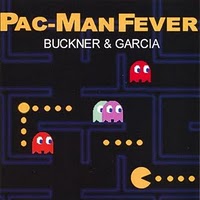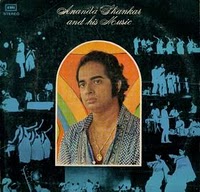 A walking freak show and the ultimate novelty act of the ’60s. But behind Tiny Tim’s fruity falsetto antics lay a genuine love of his material, most of it taken from the 20’s – an equally odd time in popular music–before the rise of Bing Crosby–when nearly all white male vocalists were no-voice freaks. I can’t honestly say that Tim’s debut LP survives its own novelty value in the end. But it’s a well-produced smorgasbord of highly entertaining moments complete with genuine hilarity (“The Viper”) and some genuinely touching performances as well, especially the ones done in the singer’s natural baritone (Gordon Jenkins’ “This Is All I Ask,” “Then I’d Be Satisfied with Life.”) Another curiosity: why was this kind of faux-vaudeville so popular in the ’60s? Does anybody remember “Winchester Cathedral”? In that sense Tiny Tim fit right into his times. During the late ’50s and early ’60s when he performed at Hubert’s Museum (singing Don Gibson’s “Oh Lonesome Me” underwater) and appeared in Jack Smith’s Normal Love, he was merely freakish. –Singer Saints
A walking freak show and the ultimate novelty act of the ’60s. But behind Tiny Tim’s fruity falsetto antics lay a genuine love of his material, most of it taken from the 20’s – an equally odd time in popular music–before the rise of Bing Crosby–when nearly all white male vocalists were no-voice freaks. I can’t honestly say that Tim’s debut LP survives its own novelty value in the end. But it’s a well-produced smorgasbord of highly entertaining moments complete with genuine hilarity (“The Viper”) and some genuinely touching performances as well, especially the ones done in the singer’s natural baritone (Gordon Jenkins’ “This Is All I Ask,” “Then I’d Be Satisfied with Life.”) Another curiosity: why was this kind of faux-vaudeville so popular in the ’60s? Does anybody remember “Winchester Cathedral”? In that sense Tiny Tim fit right into his times. During the late ’50s and early ’60s when he performed at Hubert’s Museum (singing Don Gibson’s “Oh Lonesome Me” underwater) and appeared in Jack Smith’s Normal Love, he was merely freakish. –Singer Saints
Uncategorizable
Buckner & Garcia “Pac-Man Fever” (1982)
 It all started with the video junkie smash single, “Pac-Man Fever,” probably the most stirring celebration of hitting rock bottom since the Velvet Underground’s “Heroin,” and blossomed into this full length cash in. You can take Pac-Man Fever as mere novelty, or read between the 8-bit lines for the real story. Check out the chilling “to a Centipede,” as the protagonist’s emotionless voice warns “don’t try hiding behind the mushrooms… I see you” like a calculating serial-killer, the shell-shocked pilot in a kill or be killed battle at the heart of “Defender,” or last humanoid on Earth “Goin’ Berzerk” as an ever-increasing wave of robots and Evil Otto close in. All the pressure comes to a boil in the complex set of dance floor directives, “Do the Donkey Kong,” one unrelenting amphetamine rush of a track. Pac-Man Fever stands as a one of a kind archive of a long lost age that will never return, as wood-paneled consoles rot in the back of pizza parlors while the youth of today live out their homicidal fantasies at home, their hot-pocket stained faces permanently glued to X-Boxes and Wiis. –Ben
It all started with the video junkie smash single, “Pac-Man Fever,” probably the most stirring celebration of hitting rock bottom since the Velvet Underground’s “Heroin,” and blossomed into this full length cash in. You can take Pac-Man Fever as mere novelty, or read between the 8-bit lines for the real story. Check out the chilling “to a Centipede,” as the protagonist’s emotionless voice warns “don’t try hiding behind the mushrooms… I see you” like a calculating serial-killer, the shell-shocked pilot in a kill or be killed battle at the heart of “Defender,” or last humanoid on Earth “Goin’ Berzerk” as an ever-increasing wave of robots and Evil Otto close in. All the pressure comes to a boil in the complex set of dance floor directives, “Do the Donkey Kong,” one unrelenting amphetamine rush of a track. Pac-Man Fever stands as a one of a kind archive of a long lost age that will never return, as wood-paneled consoles rot in the back of pizza parlors while the youth of today live out their homicidal fantasies at home, their hot-pocket stained faces permanently glued to X-Boxes and Wiis. –Ben
Ananda Shankar “Ananda Shankar And His Music” (1975)
 A scorching soundclash that mixes western funk and fusion with traditional Indian music to stunning effect. The result is some of the funkiest and out-there music from the 70’s. Mad sitar playing, buzzing electronic effects and heavy use of percussion and a non-stop groove makes for some great listening. This is cross-cutural music of the highest order that pandered to no fashions and managed to avoid sounding contrived. High on energy and catchy riffs as well as a good insight into more traditional Indian sounds. –Jon
A scorching soundclash that mixes western funk and fusion with traditional Indian music to stunning effect. The result is some of the funkiest and out-there music from the 70’s. Mad sitar playing, buzzing electronic effects and heavy use of percussion and a non-stop groove makes for some great listening. This is cross-cutural music of the highest order that pandered to no fashions and managed to avoid sounding contrived. High on energy and catchy riffs as well as a good insight into more traditional Indian sounds. –Jon
Ravi Shankar’s nephew, Ananda, fuses traditional Indian music with heavy psych-funk creating one of the best “Indo-fusion” albums of all time! –David


